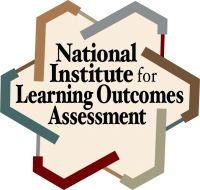Description
This assignment is designed for an introductory statistics course at the end of the semester. Students are assigned to groups to review and prepare a presentation on key learning outcomes (concepts) in the course, including dependent t, independent t, correlation, regression, and ANOVA. The review/presentation can take the form of rap, comedy, Broadway musical, sitcom, talk show, news program, etc.
Background and Context
This assignment is designed to be used in Introductory Statistics at the end of the semester. However, feedback from colleagues at NILOA indicated that it could be adapted to multiple classes where explaining analytical inquiry is a critical component. For example, comparing and contrasting philosophical questions and applying the principles of chemistry, biology, physics, and math to solve problems are but two examples.
This assignment is intended to assess Intellectual Skills and Applied Learning at the B.A. level, but more specifically the WASC [Western Association of Schools and Colleges] competency Quantitative Reasoning. It assumes students have mastered the quantitative content, according to Maki (2004). Bloom’s cognitive domain would place the level at synthesis/evaluation, or, according to the revised taxonomy, the evaluation/creation level. Creating requires users to put parts together in a new way or synthesize parts into something new and different, a new form or product. This process is the most difficult mental function in the new taxonomy (Wilson, 2013). It also assumes a high level of yet two other WASC competencies, Critical Thinking and Oral Communication.
According to the Lumina Foundation (2011), a critical fluency in Intellectual Skills is oral communication. In quantitative applications, analytical inquiry lies at the core of intellectual skills, encompassing what we do when we think for example, scrutinizing, managing and configuring knowledge prior to communicating findings, perspectives and interpretation. The Applied Learning outcomes make it clear that, beyond what graduates know, what they can do with what they know is the ultimate benchmark of learning (Lumina, 2011, p. 8).
Action verbs in these DQP proficiencies that can be used to guide construction of the assignment include:
- Construct coherent presentations on technical issues
- Translate verbal problems into mathematical algorithms
- Quantitatively evaluate information
- Differentiate and evaluate theories and problems
- Explain how analysis was conducted to find meaning (Lumina, 2011, p. 20)
We are using a conscious strategy across all sections of statistics to assess a few of the complex Intellectual Skills. These include the idea of subdividing assessments as elucidated by Carol Geary Schneider. By using the subdivide strategy, we hope to help students actually connect the different parts of their educational experiences and learning, to prepare them for the complex and unscripted problems they will encounter in the workplace, the public sphere, and in their personal lives (Schneider, 2013, 28).
- analytic inquiry in the development of the research questions and hypotheses
- communication fluency in the oral presentation
- quantitative fluency in the use of statistical tests
- use of information resources to support and defend the research questions
Reflections
In the assignment, students are assigned to a group for the purpose of preparing a review of specified student learning outcomes (slos). These slos correspond to the material covered from the third exam to the end of class, and include dependent t, independent t, correlation, regression, and ANOVA. The review will take the form of a 10 to 15 minute oral presentation. The exact format of the oral presentation will be rap, comedy, Broadway musical, sitcom, Jeopardy, sports talk show, news program, etc.
Grading is based on:
- Accurate and successful review of slos
- Group participation grade
- Specific oral presentation criteria.
- As it is a requirement that all students must participate, any student not present during the entire final exam period will receive a zero for this assignment.
Students
Students in MTH 270 come from a variety of majors. While most are freshmen or sophomores, there are a few upperclassmen as well. An informal survey of the students at the beginning of the semester indicated that most are taking the class because they have to. A few have expressed interest in advanced, specialized knowledge. At the other end of the spectrum, a few are repeating the class.
The student-perceived challenges with the assignment have been the group work aspect, commuters vs. residential students, and the dreaded fear of talking in class.
Faculty Experience
By asking students to explain and present their work to an audience, we elevate the cognitive level of the assignment. At the beginning of the present semester, I held a Skype session with two former students. According to those students, they put more into the oral presentation than they would have done for a final and they got more out of it.
I have interpreted the latter to mean that they retain the knowledge at a higher level and for a longer period of time. Therein is the puzzling aspect of the assignment. I’ve heard these student observations before, but I’ve yet to have the opportunity to test it. Using a competency assessment framework, I should be able to see if this assignment is effective.
Usefulness of Assignment
Others who might find such an assignment useful include faculty from subject areas where the key is further cognition, where the true test is presentation in the real world. These might include the sciences, math, marketing, accounting, finance, psychology, and sociology.

